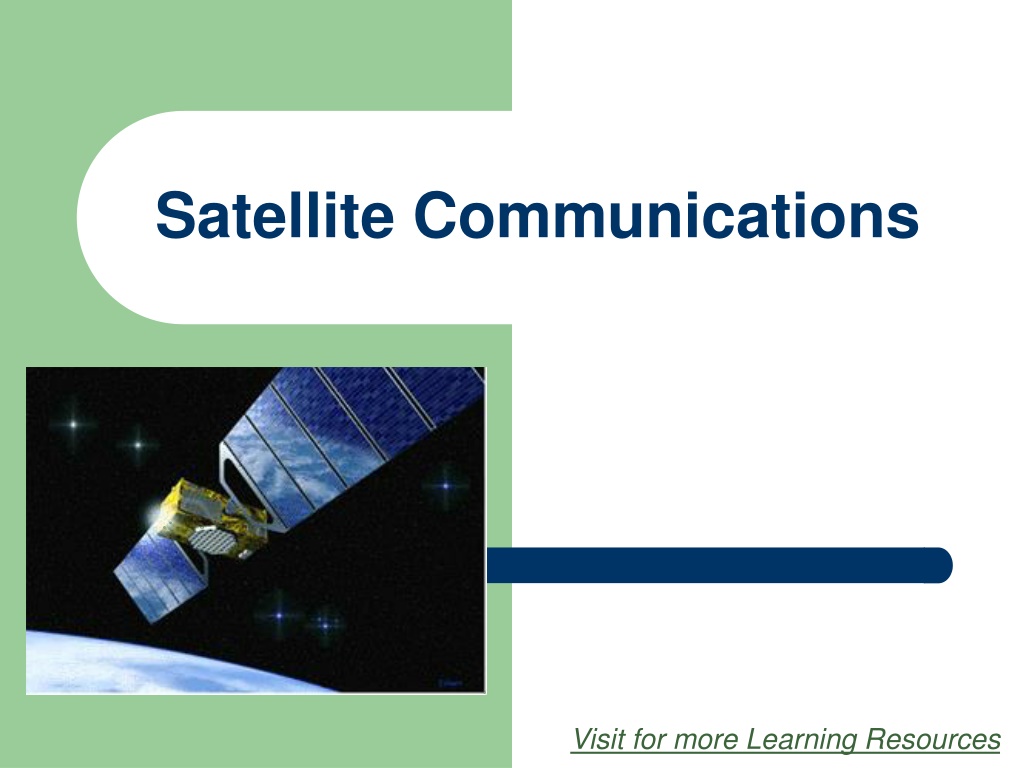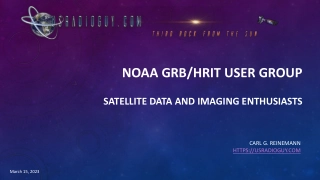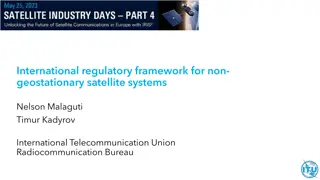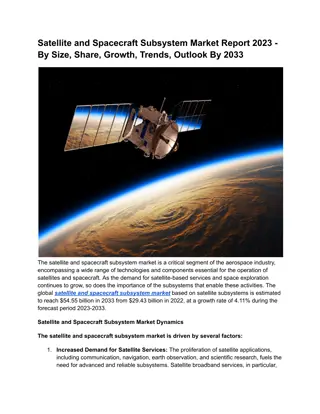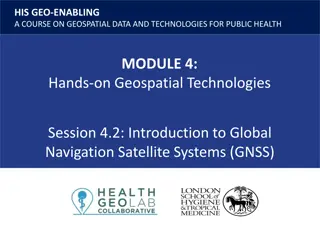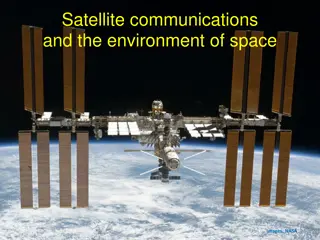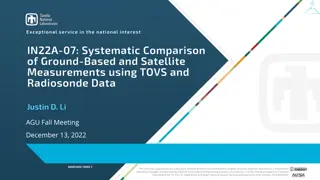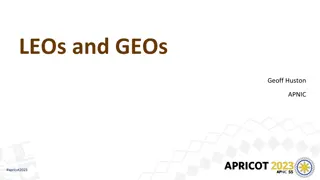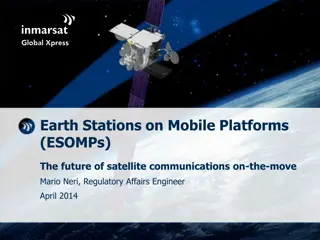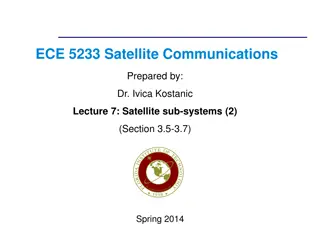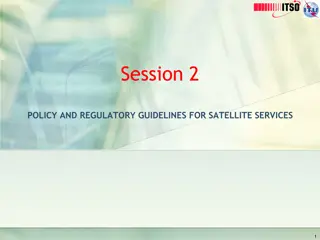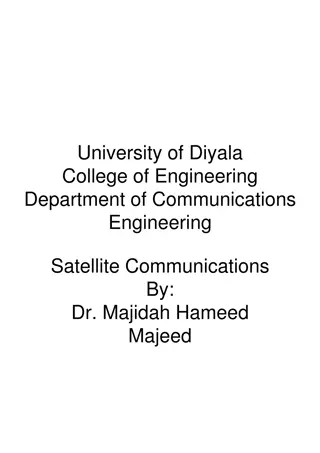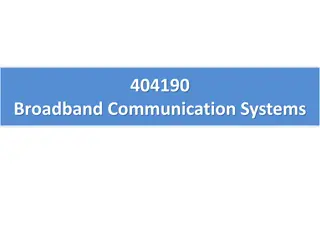Understanding Satellite Communications and Its Advantages
Satellite communications play a crucial role in allowing two Earth stations to communicate through a relay satellite. This method offers various advantages such as extended coverage area, independent transmission cost, precise communication, and higher bandwidth availability. Despite its benefits, satellite communication also has drawbacks like high launch costs, limited bandwidth, and increased propagation delay compared to terrestrial communication. Factors affecting satellite communication include elevation angle, coverage angle, and other impairments that can impact signal transmission efficiency.
Download Presentation

Please find below an Image/Link to download the presentation.
The content on the website is provided AS IS for your information and personal use only. It may not be sold, licensed, or shared on other websites without obtaining consent from the author. Download presentation by click this link. If you encounter any issues during the download, it is possible that the publisher has removed the file from their server.
E N D
Presentation Transcript
Satellite Communications Visit for more Learning Resources Visit for more Learning Resources
Overview Basics of Satellites Types of Satellites Capacity Allocation
Basics: How do Satellites Work Two Stations on Earth want to communicate through radio broadcast but are too far away to use conventional means. The two stations can use a satellite as a relay station for their communication One Earth Station sends a transmission to the satellite. This is called a Uplink. The satellite Transponder converts the signal and sends it down to the second earth station. This is called a Downlink.
Basics: Advantages of Satellites The advantages of satellite communication over terrestrial communication are: The coverage area of a satellite greatly exceeds that of a terrestrial system. Transmission cost of a satellite is independent of the distance from the center of the coverage area. Satellite to Satellite communication is very precise. Higher Bandwidths are available for use.
Basics: Disadvantages of Satellites The disadvantages of satellite communication: Launching satellites into orbit is costly. Satellite bandwidth is gradually becoming used up. There is a larger propagation delay in satellite communication than in terrestrial communication.
Basics: Factors in satellite communication Elevation Angle: The angle of the horizontal of the earth surface to the center line of the satellite transmission beam. This effects the satellites coverage area. Ideally, you want a elevation angle of 0 degrees, so the transmission beam reaches the horizon visible to the satellite in all directions. However, because of environmental factors like objects blocking the transmission, atmospheric attenuation, and the earth electrical background noise, there is a minimum elevation angle of earth stations.
Basics: Factors in satellite communication (cont.) Coverage Angle: A measure of the portion of the earth surface visible to a satellite taking the minimum elevation angle into account. R/(R+h) = sin( /2 - - )/sin( + /2) = cos( + )/cos( ) R = 6370 km (earth s radius) h = satellite orbit height = coverage angle = minimum elevation angle
Basics: Factors in satellite communication (cont.) Other impairments to satellite communication: The distance between an earth station and a satellite (free space loss). Satellite Footprint: The satellite transmission s strength is strongest in the center of the transmission, and decreases farther from the center as free space loss increases. Atmospheric Attenuation caused by air and water can impair the transmission. It is particularly bad during rain and fog.
Basics: How Satellites are used Service Types Fixed Service Satellites (FSS) Example: Point to Point Communication Broadcast Service Satellites (BSS) Example: Satellite Television/Radio Also called Direct Broadcast Service (DBS). Mobile Service Satellites (MSS) Example: Satellite Phones
Types of Satellites Satellite Orbits GEO LEO MEO Molniya Orbit HAPs Frequency Bands
Geostationary Earth Orbit (GEO) These satellites are in orbit 35,863 km above the earth s surface along the equator. Objects in Geostationary orbit revolve around the earth at the same speed as the earth rotates. This means GEO satellites remain in the same position relative to the surface of earth.
GEO (cont.) Advantages A GEO satellite s distance from earth gives it a large coverage area, almost a fourth of the earth s surface. GEO satellites have a 24 hour view of a particular area. These factors make it ideal for satellite broadcast and other multipoint applications.
GEO (cont.) Disadvantages A GEO satellite s distance also cause it to have both a comparatively weak signal and a time delay in the signal, which is bad for point to point communication. GEO satellites, centered above the equator, have difficulty broadcasting signals to near polar regions
Low Earth Orbit (LEO) LEO satellites are much closer to the earth than GEO satellites, ranging from 500 to 1,500 km above the surface. LEO satellites don t stay in fixed position relative to the surface, and are only visible for 15 to 20 minutes each pass. A network of LEO satellites is necessary for LEO satellites to be useful
LEO (cont.) Advantages A LEO satellite s proximity to earth compared to a GEO satellite gives it a better signal strength and less of a time delay, which makes it better for point to point communication. A LEO satellite s smaller area of coverage is less of a waste of bandwidth.
LEO (cont.) Disadvantages A network of LEO satellites is needed, which can be costly LEO satellites have to compensate for Doppler shifts cause by their relative movement. Atmospheric drag effects LEO satellites, causing gradual orbital deterioration.
Medium Earth Orbit (MEO) A MEO satellite is in orbit somewhere between 8,000 km and 18,000 km above the earth s surface. MEO satellites are similar to LEO satellites in functionality. MEO satellites are visible for much longer periods of time than LEO satellites, usually between 2 to 8 hours. MEO satellites have a larger coverage area than LEO satellites.
MEO (cont.) Advantage A MEO satellite s longer duration of visibility and wider footprint means fewer satellites are needed in a MEO network than a LEO network. Disadvantage A MEO satellite s distance gives it a longer time delay and weaker signal than a LEO satellite, though not as bad as a GEO satellite.
Other Orbits Molniya Orbit Satellites Used by Russia for decades. Molniya Orbit is an elliptical orbit. The satellite remains in a nearly fixed position relative to earth for eight hours. A series of three Molniya satellites can act like a GEO satellite. Useful in near polar regions.
Frequency Bands Different kinds of satellites use different frequency bands. L Band: 1 to 2 GHz, used by MSS S-Band: 2 to 4 GHz, used by MSS, NASA, deep space research C-Band: 4 to 8 GHz, used by FSS X-Band: 8 to 12.5 GHz, used by FSS and in terrestrial imaging, ex: military and meteorological satellites Ku-Band: 12.5 to 18 GHz: used by FSS and BSS (DBS) K-Band: 18 to 26.5 GHz: used by FSS and BSS Ka-Band: 26.5 to 40 GHz: used by FSS For more detail contact us For more detail contact us
